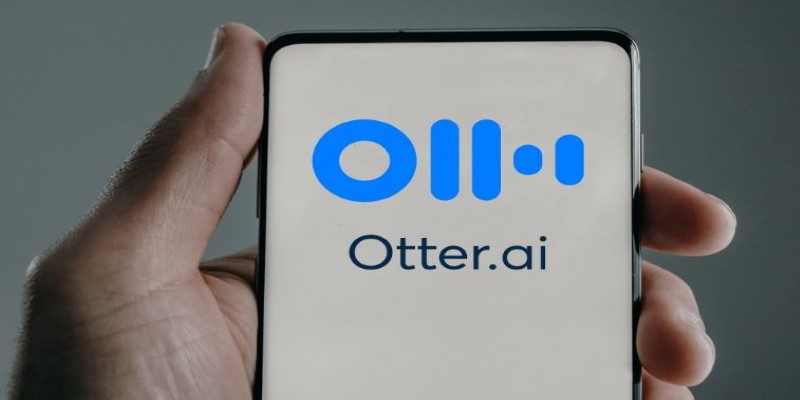In today’s fast-paced world, productivity is key. AI tools are transforming how we work by automating tasks, streamlining workflows, and reducing manual effort. These tools allow professionals to focus on important tasks while eliminating repetitive work, making daily operations more efficient. Whether it’s managing projects, improving communication, or automating processes, AI-powered solutions enhance productivity and save time.
By leveraging AI, businesses and individuals can optimize efficiency, minimize errors, and achieve better results. With smarter work strategies, AI tools enable users to work faster, stay organized, and maximize their output in an increasingly demanding professional environment.
8 AI Tools to Boost Work Productivity
Here are eight AI tools that can help streamline tasks, automate repetitive processes, and enhance productivity at work:
Grammarly: Perfecting Your Written Communication
Grammarly is an artificial intelligence-powered writing tool that enhances written communication by detecting and correcting grammar, spelling, and punctuation errors. It is especially beneficial for working professionals who have to deliver well-crafted content within a short time frame, whether it is an email, report, or social media update. Grammarly also ensures tone and readability, thus facilitating the expression of your message clearly and professionally.
For teams, Grammarly's business plan streamlines collaboration so that all written materials are consistent in quality. By making editing automatic, Grammarly saves time and enables people to communicate better, thereby enhancing productivity.
Trello: Simplifying Task Management
Trello is task management software that simplifies task organization through boards, lists, and cards. It's meant to make teams work on projects more efficiently by giving a visual overview of tasks and workflows. With AI-driven features such as automation (Butler), Trello can minimize manual work by automating routine tasks like moving cards between lists or sending reminders.

It also supports collaboration with widely used tools such as Slack and Google Drive, ensuring a smooth process for teams. By organizing work and eliminating redundant work, Trello enhances productivity and ensures projects are on schedule with deadlines achieved without stress.
Asana: Streamlining Project Management
Asana is a robust AI-powered project management tool that helps teams stay organized and on top of tasks. It allows users to assign tasks, set deadlines, and track project progress in real-time. Asana's AI features are particularly valuable, as they predict potential bottlenecks, suggest task assignments based on team workload, and provide clear insights into project status.
This allows you to anticipate and resolve issues before they arise. Asana’s integration with tools like Slack and Microsoft Teams ensures that everyone stays on the same page, improving overall efficiency and team collaboration for higher productivity.
Slack: Enhancing Team Communication
Slack is an AI-driven communication platform designed to improve team collaboration. It offers channels for organizing conversations, whether by project, team, or topic, reducing the clutter often found in email inboxes. With AI-powered features like smart replies and message prioritization, Slack ensures that users stay focused on the most important conversations.
It also integrates seamlessly with tools like Trello and Asana, creating a unified workspace. Slack enhances productivity by streamlining communication, minimizing distractions, and ensuring that team members can quickly access important information and updates, all while maintaining a conversational tone.
Zapier: Automating Workflows
Zapier is a tool that automates workflows by connecting different apps and services. It creates "Zaps" that perform automated actions, like saving email attachments to cloud storage or adding form submissions to a CRM. By automating repetitive tasks, Zapier helps save time and reduce manual effort, freeing users to focus on more important work.
This tool supports thousands of apps, allowing users to automate a wide range of tasks, from data entry to email management. The result is a significant productivity boost as workflows are streamlined and repetitive tasks are handled automatically.
Microsoft 365 Copilot: Enhancing Office Productivity
Microsoft 365 Copilot is an AI-powered assistant designed to improve productivity within Microsoft Office tools like Word, Excel, and Outlook. It helps automate tasks such as summarizing emails, generating reports, and analyzing data. Copilot can assist with writing by drafting content based on brief prompts or suggesting improvements to existing text.
Excel identifies trends and helps make sense of complex data, while PowerPoint can generate slides based on a user's notes. By integrating AI into everyday tasks, Copilot makes working within Microsoft 365 faster and more efficient, enabling users to focus on higher-level decision-making and creativity.
Otter.ai: Improving Meetings and Transcriptions
Otter.ai is an AI-powered transcription tool that converts spoken language into written text in real-time. It's particularly useful for meetings, webinars, and conferences, where manual note-taking can be tedious and error-prone. Otter.ai transcribes conversations accurately, allowing users to focus on the discussion rather than writing notes.

The tool also highlights key points, adds comments, and organizes transcriptions for easy reference. With Otter.ai, professionals can save time on post-meeting summaries, increase productivity, and ensure that important details aren’t missed. It’s a game-changer for anyone who regularly participates in meetings or needs to transcribe audio content.
Notion: All-in-One Workspace for Teams
Notion is an AI-powered all-in-one workspace designed to help teams manage projects, take notes, and collaborate. It combines several productivity tools into one platform, allowing users to create customized workflows, track progress, and store documents. Notion’s AI features include smart templates that generate content, personalized recommendations, and task reminders.
The tool helps streamline information flow, ensuring that all team members have access to the same resources and updates. With its versatility and AI-driven capabilities, Notion enhances productivity by simplifying project management and improving team collaboration in a single platform.
Conclusion
AI tools are transforming the way we work, making tasks faster, communication smoother, and project management more efficient. By automating repetitive work and enhancing productivity, these tools free up time for more strategic thinking and creativity. Whether you’re streamlining workflows with Zapier, improving writing with Grammarly, or managing projects with Asana, AI can be a game-changer. Embracing these tools now means staying ahead in an increasingly competitive world, allowing you to work smarter, not harder, every day.
